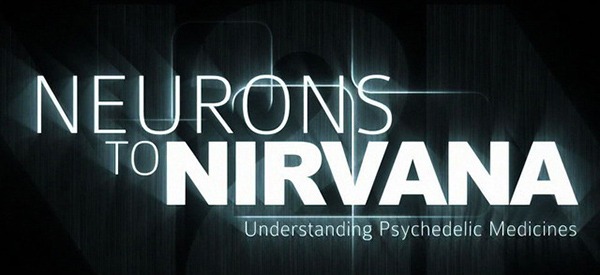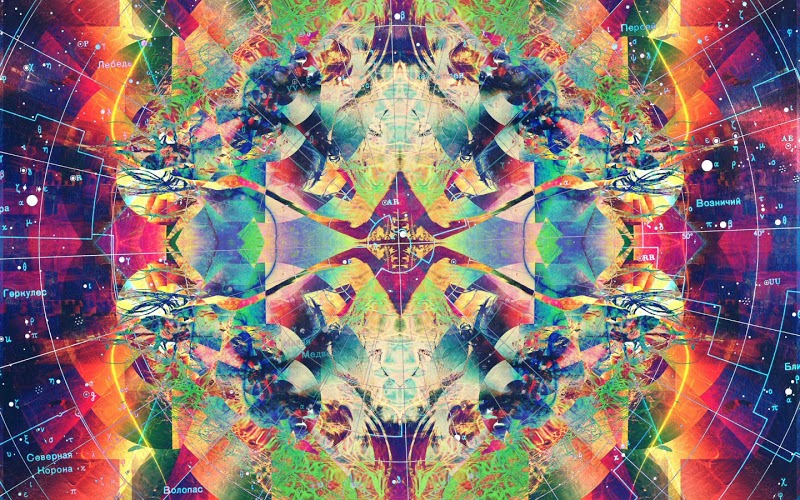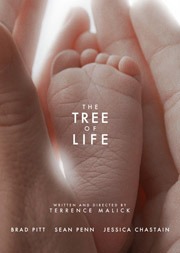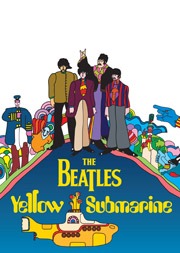I am very excited to share with you my conversation with Oliver Hockenhull, director of the new documentary film Neurons to Nirvana: Understanding Psychedelic Medicines.

About the film
Neurons to Nirvana: Understanding Psychedelic Medicines is a richly-illustrated feature documentary about the resurgence of psychedelics as medicine. Through interviews with the world’s foremost researchers, writers, psychologists and pioneers in psychedelic psychotherapy, the film explores five powerful psychedelic substances (LSD, Psilocybin, MDMA, Ayahuasca and Cannabis) and their previously established medicinal and psychotherapeutic potential.
The film is finished but needs funding for marketing and distribution. If you are interested in learning more about the project and bringing this film to life, please check out the Kickstarter page! [UPDATE: The Kickstarter campaign was successfully funded and this film will be marketed and distributed soon! Stay tuned!]

About Oliver
Oliver Hockenhull is an artist, screenwriter, communication theorist, stand-up philosopher, essayist and lecturer who works in film, video, hyper media installations, writing, and design. He has taught at Northwestern University in Chicago and presented at Universities in Canada, the US, and Europe. His media works have included a variety of pivotal subjects: the social and intellectual import of the eminent writer, Aldous Huxley; an experimental film essay on evolution featuring Richard Dawkins (and the gorillas of the London Zoo); an essay on architecture extending from the early works of Mies van der Rohe to the steps of the Burning Ghats of Varanasi; a hyper media installation that questions ‘chance‘ — as quantum indeterminate noise — to edit film; a feature comedy collaboration with one of North America’s most outrageous theatre group on Shabbatai Zevi, ‘the other’ great Jewish Messiah; and now a feature documentary on psychedelics.
The Interview
Welcome to Psychedelic Frontier, and thank you for everything you are doing to spread knowledge about these very misunderstood medicines. How did you get involved in the project?
The initial impulse to do the film came out of discussions I had with Mark Achbar.
Mark is one of the more successful documentary producers, directors in the world. He co-directed The Corporation and Manufacturing Consent: Noam Chomsky and the Media, both of which were extremely well-received by audiences and critics. Both films can be seen as activist works, imaginatively presented yet quite intellectually rigorous.
My own background is principally in the film essay form, in experimental cinema and in art cinema — I have made dramas, political films, science films, dozens of short films and numerous documentaries. Mark knew of the documentary I made on Aldous Huxley years ago and so he knew I have had a long interest in the “mind manifesting” substances.
It wasn’t long into the discussion of our various interest that we hit upon the idea of making a film about the current psychedelic renaissance in research and in culture.
You could make a movie about anything you wanted. What drew you to the topic of psychedelics?
Psychedelics are not only illegal but taboo — and taboos are inherently areas that filmmakers need to be attracted to. Not because we want to court controversy but because areas of taboo are blind areas, unseen and unexamined areas. Society can’t afford to be so determinately ignorant and repressed.
Why is the West so frightened of these substances — substances that in other cultures and other times were considered the food of the Gods, elixirs of enlightenment, key tools for social cohesion and self exploration. It is a subject I felt needed to be explicated, to be pulled apart, to be studied — in terms of the hard science, in terms of politics, culture — and in terms of their effects on consciousness. It really came down to the question — what needs to be said now? What film really needs to be made? What could possibly help seed a compassionately aware society?
The fact that there was a strong renewal of interest from the academic and research community provided the framework in which all these questions could be addressed.
Some documentaries, like DMT: The Spirit Molecule, have lots of psychedelic imagery, while others remain firmly footed in sober reality. How do the aesthetics of the psychedelic experience inform the look of your film, and why?
People suggest that the visual pyrotechnics of the psychedelic experience are secondary phenomenon, icing on the cake as it were, but not the main take away — while others suggest that the intense visuals can be understood as the central manifestation of the psychedelic state and should be respected as such. I personally believe that there is an esoteric and vital significance to the visual eruptions — that it is a form of release or revelation into some manner of primordial splendor. So yes in one version of the film the aesthetics of the psychedelic form is most definitely engaged with — but in neither of the versions of the film is it the core. The actual experience itself is so much more exquisite than what any one can represent in this world.

“I personally believe that there is an esoteric and vital significance to the visual eruptions — that it is a form of release or revelation into some manner of primordial splendor.”
There are several versions of the film?
There are two versions of the film.
Why is that?
The subject matter is dauntingly excessive. So much to say and explore and reflect on…
We are releasing Neurons to Nirvana: Understanding Psychedelic Medicines first. That one is about 70 minutes long and is designed to be wonderfully accessible to anyone and everyone. The other version, Neurons to Nirvana: The Great Medicines is 108 minutes and is more esoteric, has a different structure and different music. It will be available for special screenings at Festivals but will only be publicly available in about a year’s time. That is the OD version! The Original Director’s cut!
The title, Neurons to Nirvana, touches on the interplay between science and mysticism that underlies psychedelic culture. Many people view these plants and substances as sacraments to be understood through personal experience, while others insist on studying them scientifically. In your eyes, what are the roles of science and mysticism in interpreting the psychedelic experience?
Mysticism and science need not be purely divergent viewpoints — especially when we are talking about altered states of consciousness incited by chemical means! Science can explain much by studying the mechanisms of psychedelic action on molecular biology, neurophysiology and neuroanatomy but mysticism does have a massive historical record describing and detailing altered states of consciousness. I don’t think we should be dismissive of the long history and extensive library of mystical literature — just because most of this literature and understandings is from the past does not make it useless to our current era.
The Good Friday Experiment is a case in point and a key investigation research experiment regarding the power of psychedelics to generate a mystical experience. From Wikipedia:
The Marsh Chapel Experiment (a.k.a. “the Good Friday Experiment“) was a 1962 experiment conducted on Good Friday at Boston University’s Marsh Chapel. Walter N. Pahnke, a graduate student in theology at Harvard Divinity School, designed the experiment under the supervision of Timothy Leary and the Harvard Psilocybin Project. Pahnke’s experiment investigated whether psilocybin (the active principle in psilocybin mushrooms) would act as a reliable entheogen in religiously predisposed subjects.

Stained glass window above the altar in Marsh Chapel
As readers of Psychedelic Frontier probably know — the Good Friday Experiment was one of the most decisive in the study of religious experience. It proved that a full blown mystical experience could be occasioned by a psychedelic substance. This is an incredibly significant story in terms of human consciousness and civilization.
[ Note: If you’re not familiar with the Good Friday Experiment, it is absolutely fascinating and worth learning about. The public radio show Radiolab has an excellent segment about it called “Blisshrooms.” Oliver’s documentary also features a section on the cultural and scientific importance of this experiment—one more reason to see the film when it is released! ]
The film concerns the “resurgence of psychedelics as medicines,” yet most people in Western nations would probably not describe them as such. What is the biggest obstacle on the road towards mainstream acceptance of psychedelics as viable medicines?
Fear and propaganda put out by Big Pharma and their government stoolies.
People are fearful of what lies in their own minds. We are an amazingly immature culture composed of amazingly immature people. Jung said it simply: Everyone carries a shadow, and the less it is embodied in the individuals conscious life, the blacker and denser it is.
Psychedelics can open our awareness to the full cacophony of selves that we are. They can allow us to orchestrate these many selves into an elegant expression of the eternal now. Unfortunately our culture is extremely superficial and to go against the grain of this superficiality requires much strength, grace and community. Not an easy proposition in a society governed by a primitive hierarchy, calcified institutional thought and overriding greed.
What can psychedelic enthusiasts around the world do to educate the public about these powerful substances and help enact evidence-based drug policy?
Support our film at Kickstarter. [Update: The Kickstarter campaign was successfully funded. Thanks to those who supported it!]
Lastly, do you have a favorite “psychedelic” movie? Not necessarily one about drugs, but a movie which strikes you as having a psychedelic aesthetic or ethos?
Tree of Life by Terrence Malick, anything and everything by Tarkovsky, and for a light-hearted colorful approach — Yellow Submarine with the Beatles.
Oliver, thank you for sharing your thoughts with us today.
Thanks so much for your interest in the film!
Liked this post? Subscribe to my RSS feed to get much more!














